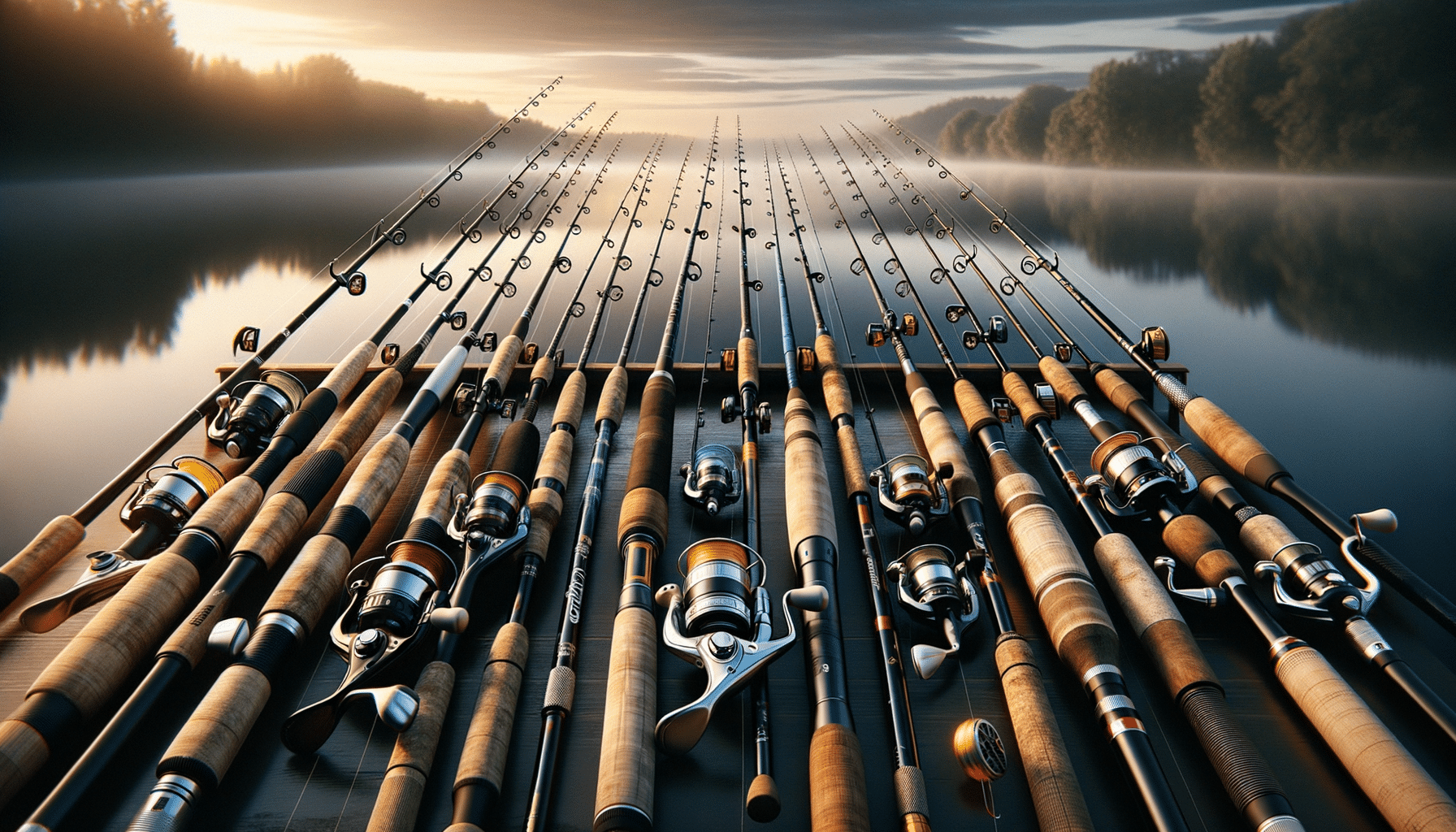Find the Right Beginner Fishing Rod for Your First Catch
Ready to start your fishing adventure? Whether you’re new to the sport or looking for a reliable rod to get started, there are plenty of beginner-friendly options to choose from. Explore affordable and well-reviewed fishing rods designed to help you enjoy your time on the water and make your first catch a great experience!

Understanding Fishing Rod Basics
Fishing is a timeless hobby that connects us with nature and provides a peaceful escape from the hustle and bustle of daily life. For beginners, selecting the right fishing rod can be a daunting task. The key is to understand the basic components and how they influence your fishing experience. A fishing rod is essentially a long, flexible pole that is used to cast a fishing line into the water. It typically consists of a handle, a reel seat, guides, and a tip. Each part plays a crucial role in the rod’s performance and suitability for different types of fishing.
When choosing a fishing rod, consider the material. Common materials include fiberglass, graphite, and composite blends. Fiberglass rods are known for their durability and flexibility, making them suitable for beginners who might be rough on their gear. Graphite rods, on the other hand, offer sensitivity and lightweight handling, making them ideal for detecting subtle bites. Composite rods combine the benefits of both, offering a balance of strength and sensitivity.
- Fiberglass: Durable and flexible
- Graphite: Sensitive and lightweight
- Composite: Balanced strength and sensitivity
Understanding these basics will help you make an informed decision when selecting your first fishing rod.
Choosing the Right Rod Length and Action
The length and action of a fishing rod are critical factors that determine its performance. Rod length affects casting distance and accuracy. Shorter rods (under 6 feet) are great for close-quarters fishing, offering better control and precision. Longer rods (over 7 feet) provide greater casting distance, making them suitable for open water and surf fishing.
Rod action refers to how much and where a rod bends when pressure is applied. Fast action rods bend near the tip, offering quick response and sensitivity. They are ideal for single-hook lures and techniques that require quick hook sets. Medium action rods bend in the middle, providing a balance between sensitivity and casting distance. They are versatile and suitable for a variety of fishing scenarios. Slow action rods bend throughout the length, offering a more forgiving experience, which is perfect for beginners who are still mastering casting techniques.
- Fast Action: Bends near the tip, quick response
- Medium Action: Bends in the middle, versatile
- Slow Action: Bends throughout, forgiving for beginners
By understanding rod length and action, you can better match your fishing rod to your intended fishing environment and personal preferences.
Exploring Different Types of Fishing Reels
In addition to the rod, the fishing reel plays a vital role in your fishing setup. Reels are responsible for holding the fishing line and facilitating casting and retrieval. There are several types of reels, each with its own advantages and disadvantages.
Spinning reels are among the most popular choices for beginners. They are easy to use, versatile, and suitable for a wide range of fishing techniques. Spincast reels, often referred to as “push-button” reels, are even simpler to operate, making them an excellent choice for children and absolute beginners. Baitcasting reels, while offering greater control and accuracy, have a steeper learning curve and are generally recommended for more experienced anglers.
- Spinning Reels: Easy to use, versatile
- Spincast Reels: Simple operation, great for beginners
- Baitcasting Reels: Greater control, suited for experienced anglers
Choosing the right reel will enhance your fishing experience, ensuring you have the right tools to tackle different fishing challenges.
Essential Fishing Gear and Accessories
Beyond the rod and reel, several other pieces of gear are essential for a successful fishing trip. Tackle boxes are indispensable for organizing your lures, hooks, and other fishing accessories. A well-stocked tackle box can make the difference between a frustrating day on the water and a rewarding fishing experience.
Fishing line is another crucial component. Monofilament, fluorocarbon, and braided lines each have unique properties that make them suitable for different fishing conditions. Monofilament is affordable and easy to handle, while fluorocarbon is nearly invisible underwater, making it great for clear water fishing. Braided lines offer strength and sensitivity, ideal for heavy cover or deep-water fishing.
- Monofilament: Affordable, easy to handle
- Fluorocarbon: Invisible underwater, great for clear water
- Braided: Strong, sensitive, ideal for heavy cover
Don’t forget about other accessories like pliers, a fishing net, and a first aid kit. Having the right gear will not only improve your chances of success but also ensure a safe and enjoyable experience.
Tips for a Successful Fishing Experience
Embarking on your fishing journey can be both exciting and challenging. To make the most of your time on the water, consider these helpful tips. First, research the local fishing regulations and obtain the necessary licenses. This ensures that you’re fishing legally and responsibly.
Next, learn about the fish species in your area and their habits. Understanding their feeding patterns and preferred habitats can significantly increase your chances of a catch. Practice casting in a controlled environment, such as your backyard, to build confidence and improve your technique.
Be patient and persistent. Fishing requires time and effort, and not every trip will result in a catch. Enjoy the process, embrace the learning experience, and appreciate the tranquility of nature. Lastly, always respect the environment by practicing catch and release when appropriate and disposing of any trash properly.
- Research local regulations and obtain licenses
- Learn about local fish species and their habits
- Practice casting to improve technique
- Be patient and enjoy the experience
- Respect the environment and practice catch and release
With these tips in mind, you’re well on your way to becoming a skilled and responsible angler.